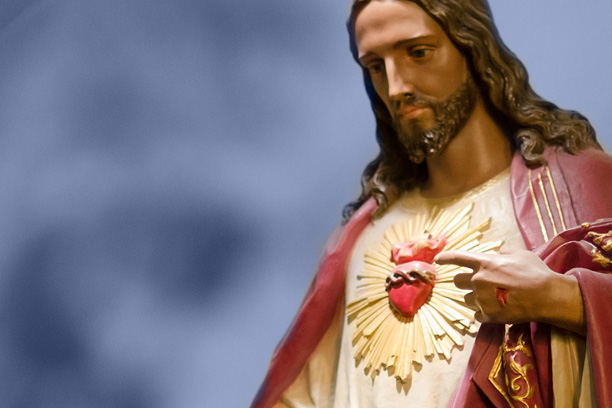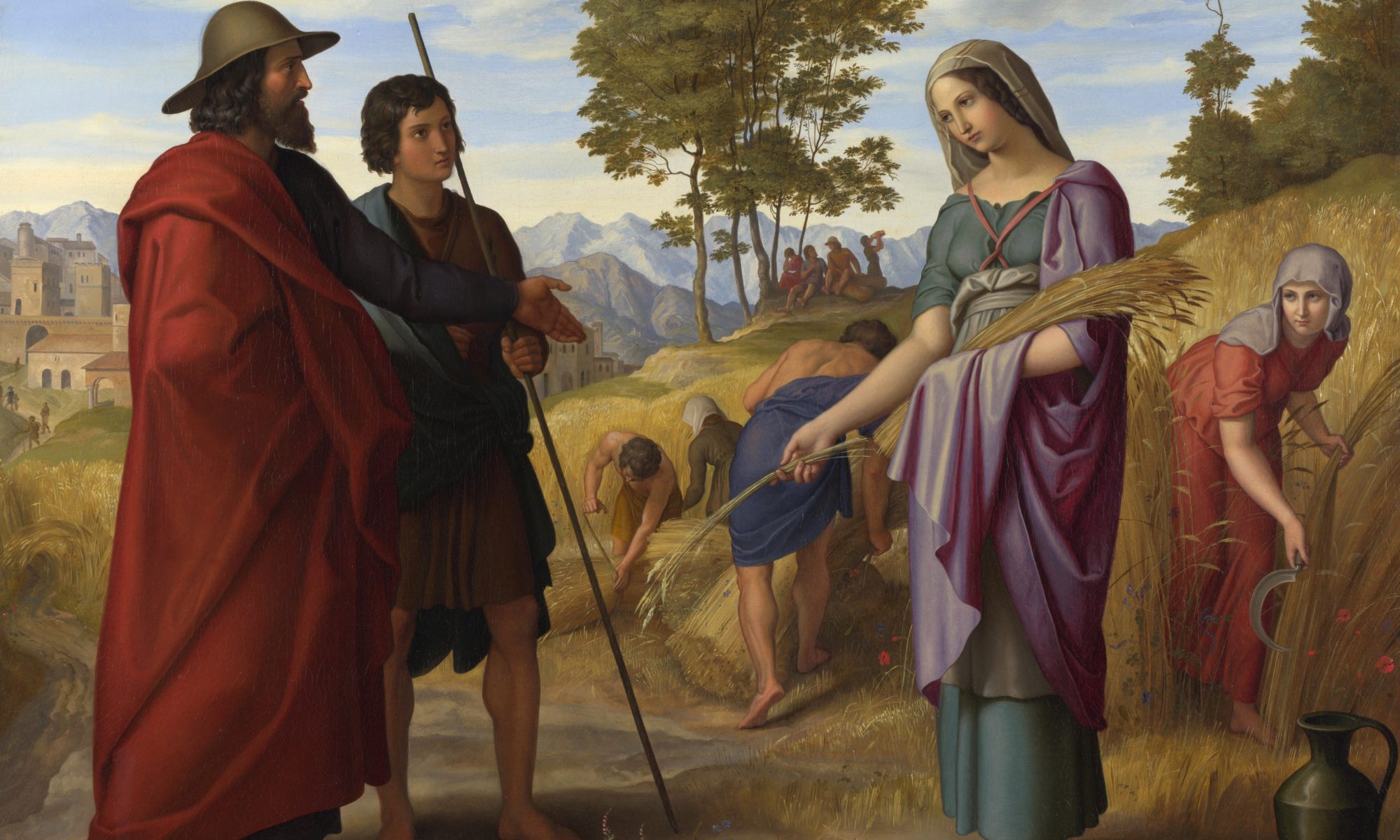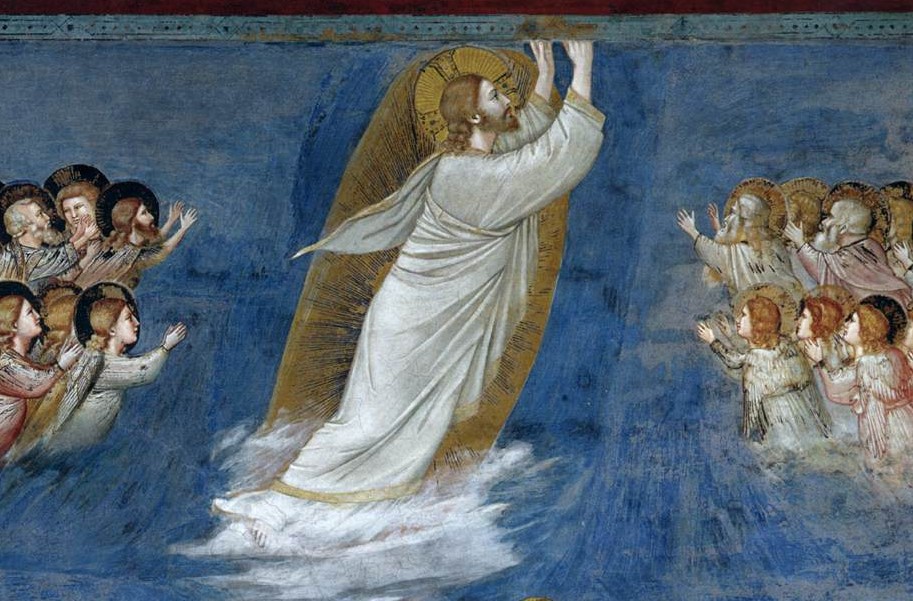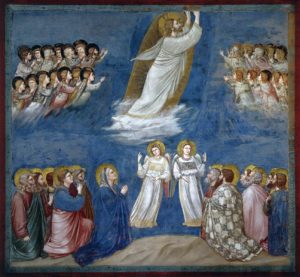I must say that in the past I was not always as on board as I should have been when it came to the Feast of the Sacred Heart. As a man, I have struggled especially with some of the Sacred Heart images of past years, especially from the 1940s into the 1970s that, frankly, made Jesus look like a bearded lady. Deep red lips, baby soft skin, “come-hither” look, “feminine” head tilt, long slender fingers, and strangely bent wrists all seemed too feminine for me. See for example the image here: Sacred Heart. Frankly, the feminized portrayal of Jesus made me cringe. “Maybe this works for some,” I thought, “but not for me.” Women are beautiful, but men shouldn’t look like women.
Then too, the whole notion of the heart has become rather distorted. The heart is thought of by most as the domain of sentimental feelings and romance. Stronger biblical notions of the heart were lost in favor of these sentimental and romantic ones. So there was Jesus, pointing to His heart to indicate His love, but I experienced it through the current notion of sentimentality and romance. While the true teaching on the Sacred Heart was much richer and more proper, the version that reached me was distorted and had little appeal.
In recent years, I have tried to recover a more proper notion of the Feast of the Sacred Heart. I have done this by coming to understand the heart in a more biblical way. I have also done this by learning to understand the heart of Christ in a stronger way that is more helpful for me.
Recovering a more biblical understanding of the heart – In celebrating the heart of the Lord Jesus, we ought to see it in a more biblical way. In the biblical world, the heart did not exclude feelings, but feelings were thought of as more located in the gut. Things such as tenderness, mercy, love, and emotions were spoken of in terms more visceral than we are comfortable with today. Most of our modern translations do not render the Hebrew and Greek references, which speak of the “bowels of mercy” in God or in the human person, literally. Most modern translations render the Hebrew “bowels of mercy” as “tender mercy” and expressions such as “my bowels are moved within me” as “my heart is moved within me.” We just don’t talk about bowels today in polite company!
I say this to indicate that for the biblical writers, feelings, sentiment, and mercy were not usually located in the heart but elsewhere. You can see this if you get a rather literal rendering of the Hebrew and Greek such as the Douay Rheims or Young’s Literal Translation and refer to passages such as these: Gen 43:30; 1 Kings 3:26; Song 5:4; Is 63:15; Jer 31:20; Lam 2:11; 2 Cr 6:12; Phil 1:8; Phil 2:1; Col 3:12. While feelings such as anxiety, fear, romance, and tenderness were pondered in the heart, their real “place” was shifted down one level to the “gut” or viscera. We do have some vestiges of these ancient notions in expressions like “gut reaction” or “butterflies in my stomach.”
So what then IS the biblical notion of the heart? While not wholly excluding feelings, the “heart” in the Scriptures is the deepest part of us; it is where we “live.” It is where we deliberate, where our memories and thoughts are. It is where we process feelings and events. It is where we ponder what to do and then decide. It is where we reflect and consider the direction of our life and most deeply understand who we are and how we are related to God and others. It is the place of our decisions and where we set priorities. In short, it is the place where “I am” in the deepest sense. Most moderns locate this in the brain (or mind, a word that the Scriptures often use for a similar understanding), but the ancients located all this in the heart.
A broader and stronger notion of the heart – Hence, as we ponder the Heart of Christ on this feast of the Sacred Heart we do not wholly exclude His tender feelings for us. But we must also broaden our notions of what it means to celebrate the Heart of Christ. The Heart of Christ is where He lives and is most essentially His very self. Hence His human heart is a heart that first of all worships and obeys His Father. It is in His heart that He ponders His Father’s will and sets out to obey it. It was in His heart that He set his face like flint for Jerusalem (Lk 9:51) and said to this apostles, “the world must know that I love the Father and that I do just as the Father has commanded me” (John 14:31). It is in His heart that He decides to lay down His life for us: No one takes it from me, but I lay it down on my own. I have power to lay it down, and power to take it up again. This command I have received from my Father (Jn 10:18). Isaiah had said of Jesus, Oblatus est quia ipse voluit (He was offered because he himself willed it) (Is 53:7). It is ultimately by Christ’s obedience that we are saved, and this was determined in His heart. His love was manifested by His decision to both obey His Father and die for us. This is deeper than emotion or feeling, though it does not exclude them. When the solider thrust a lance in His chest and heaved it open, there was revealed the human heart of Christ who resolutely chose to save us. There was also revealed the very heart of God, who loves us infinitely.
A heart tender but also strong – On this Feast of the Sacred Heart of Jesus, we celebrate not just that He loves us in an emotional sense, but even more, that He decided to die for us. He freely pondered what our salvation would cost Him and took up the cross. He chose to obey the Father for us. His love is tender but it is also decisive. The warmth of His love is sure but the wounds of His obedience also speak of a love that is strong and enduring unto the end.
Sentiment has its place but (perhaps because I am a man) I need more. On this Feast of the Sacred Heart, I am glad to point to a love that is strong, obedient, loyal, and sacrificial; a love that engages the battle on my behalf and summons me to follow; a love that is not just visceral but is of the true and deep Heart of Christ, a heart tender but also strong.
This video has many images of Jesus (some better than others). Sacred Heart of Jesus, have mercy on us!











